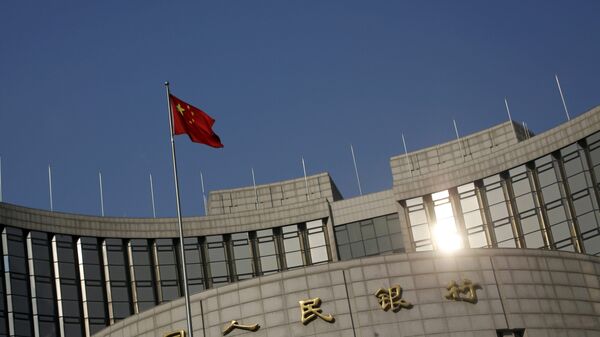Kristian Rouz — China's economy has posted an unexpected first quarter rebound, defying concerns about trade disruptions and underinvestment at home. Experts say it's too early to suggest whether this mild recovery could point to a longer-term stabilisation of the Chinese GDP growth rate, as the rebound has largely been attributed to the limited central bank support introduced last year.
READ MORE: Bank of China Opens its First Branch in India to Boost Financial Cooperation
According to the Chinese government Wednesday, the nation's first quarter GDP came in at 6.4 percent — beating the earlier expectations of either 6.2 percent (according to market consensus) or 6.3 percent (according to Reuters' advance estimate).
Additionally, the central government introduced tax cuts earlier this year, which are likely to have contributed to a quicker expansion in March, at the end of the reporting period.
"There is no denying that China's economy ended the first quarter on a stronger note," Julian Evans-Pritchard of Capital Economics China said.
Experts say the optimistic reading doesn't necessarily mean the gradual slowdown in the Chinese economy has ended. Indeed, the bounce-back might be short-lived as it owes greatly to monetary and fiscal accommodation.
However, on the other hand, it comes amid the ongoing trade tensions with the US, a cooling in global demand for manufactured goods, and sluggish domestic investment in China.
"We need more evidence to call this a full-fledged recovery. Our view for the economy is still cautious," Jianwei Xu of Hong Kong-based Natixis said. "We think it is somewhat linked to the stimulus, but we can't attribute it all to it."
The majority of experts hadn't expected any recovery or acceleration in the Chinese economy until at least the second half of this year, and even then it was only expected to happen if Beijing achieved a trade deal with the US. That is still up in the air, and it remains unclear what happens if the Sino-American trade talks eventually fall apart.
China's financial sector, however, performed better than expected in the first quarter. According to earlier reports, the mainland's lenders issued some $865 bln worth of loans in 1Q19, an absolute record.
READ MORE: Russia Enters Top 5 on National Gold Reserves List Beating China — Central Bank
Following the Chinese GDP report, Asian markets appeared to breathe a sigh of relief — as most stocks rallied across the region. Market participants believe China's industrial production could still maintain its momentum despite the overseas challenges — which would also support global energy and commodity prices.
Overall, China's GDP report appears to be good news for the global economy in general — particularly so, in the wake of a pessimistic report from the International Monetary Fund (IMF).
"We had positive surprises on credit data and housing data last week and now GDP has come in better than expectations, which is building the case that a recovery is on the way," Rodrigo Catril of the National Australia Bank said. "We see the revival of the Chinese economy as a necessary condition for an improvement in global growth outlook."
Officials in Beijing have reassured market participants, international investors and trading partners, saying the Chinese economy will likely meet their GDP goal this year — set between 6.0 and 6.5-percent expansion. The first quarter's reading supports their claims so far.
However, the near-to-medium-term outlook for the Chinese economy still greatly depends on the outcome of ongoing US trade talks, as well as the health of the global economy. Domestic factors could be insufficient to support the Chinese GDP expansion in the longer run, economists warn.
"But with credit growth now accelerating and sentiment improving, China's economy will bottom out before long if it hasn't already," Capital Economics's Evans-Pritchard said.
Despite the caution, the PBOC said it would keep its policy steady this year, while the government is expected to deepen its fiscal stimulus later this year. If China achieves a trade deal with the US sooner rather than later, the Chinese economy could potentially shift to a gradual acceleration over the next few years.




